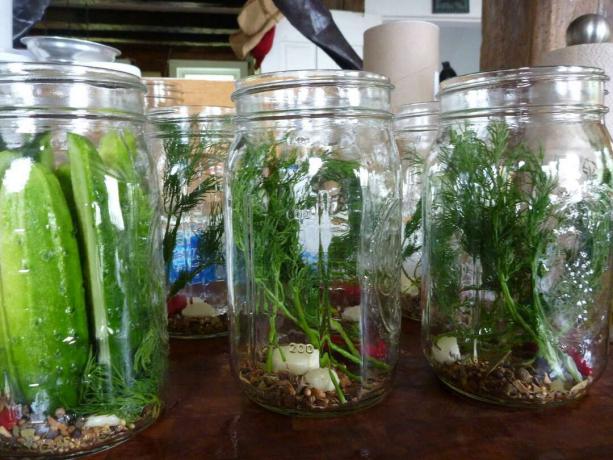The dill is a tried and tested herb in the kitchen and even has healing properties. Here you can find out everything you need to know - from cultivation to use.

contents
- Grow your own dill
- Dill varieties
- Harvest and store dill
- Dill: Uses and Ingredients
Grow your own dill
Location
The dill is in a sunny spot in your own garden. There should be no permanent waterlogging. Therefore, clay soils with a certain amount of draining sand or gravel are perfect for growing dill. In commercial cultivation, dill is also grown in the greenhouse. The plants stand both in the natural soil and in pots. Even a culture without soil in so-called hydroponic systems is possible. If you decide to cultivate the dill in a pot for the terrace or balcony, a container should be selected that is above all high enough. This is because dill forms a deep taproot. In addition, the plant grows up to 60 cm high and has a corresponding water requirement, especially in the pot. So that the cucumber herb does not droop its head too often and quickly on warm summer days, a more generous substrate volume in the pot is advisable.
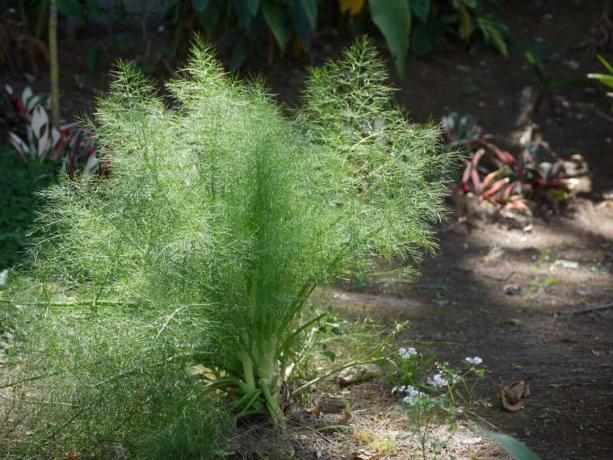
Dill is only propagated by sowing. From April the seeds can be spread directly outside. The individual seeds should not be applied too close together. In this way, you can save yourself a time-consuming thinning out in order to create enough space for the individual plants to develop again if the stand is too dense. Of course, dill can also be grown in the house from March and then planted out in May with a growth lead. At temperatures around 15 ° C, it takes about three weeks before the first seedlings can be seen.

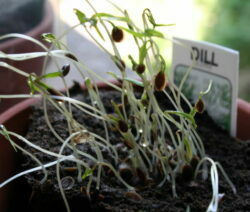
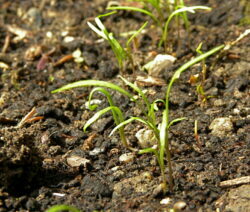
Although dill is what is known as a light germinator, the seeds should be covered with some soil outdoors. This reduces the risk of the fine seed being carried away by the wind. The seedling develops very slowly at first. This leads to a relatively large amount of weeds in the bed. So at the beginning it is a matter of diligently plucking what does not belong there. The annual herb will self-sow on the spot if it is allowed to bloom. However, it is better to change the location every year, as repeated cultivation in the same place increases the risk of typical pathogens.
You can find detailed step-by-step instructions in our article Grow dill: The cucumber herb from your own garden.
Watering and fertilizing
The cucumber herb prefers an even supply of water. Strongly fluctuating substrate moisture increases the likelihood of infestation with root fungi. Therefore, especially on hot days, when growing in the bed, the handle should be in the direction of the watering can. In terms of nutrients, the dill is more than easy to care for, especially due to its relatively short standing time. When cultivating in the bed, it is absolutely sufficient to use some primarily organic fertilizer like ours before sowing Plantura organic universal fertilizer to mix in. In the pot culture you are either looking for a high-quality, fertilized substrate like our Plantura Organic universal soil from, or occasionally fertilizes over the irrigation water. Too abundant supply of nutrients would only lead to soft shoots and excessive growth. Less is more with dill.
Plant protection
The dill is also afflicted by diseases and pests that are typical of members of the umbelliferae family. Some viruses can lead to stunted growth. Animal pests are nematodes in the root space as well Aphids and the leaf miner fly. But it is primarily the fungal pathogens that bother the cucumber herb. Due to the so-called emergence disease, large losses of seedlings can be recorded immediately after sowing. A combination of several plant-damaging mushrooms causes the delicate plants to suddenly fall over. Apart from keeping the sowing evenly moist but dry and selecting the infested plants, there is not much that can be done here. Representative of the genus of mushrooms Fusarium can also bring down the herbs at a later point in time in the culture. Since these pests remain in the soil, the location for the dill should always be changed in the next year, especially if there is an infestation.
Dill varieties
The type of dill (Anethum graveolens) is still subdivided. The most famous representative is the variety Anethum graveolens var. hortorum, the garden dill. There is also the so-called field dill (Anethum graveolens var graveolens) as well as the subspecies of Indian dill (Anethum graveolens subsp. something like that), which differs from garden dill only in its less pronounced aroma.
You can find more information in our Variety overview.
In the ranks of the garden dill grown in many places, some varieties can be found on the market. We present the characteristics of the main representatives:
- Bouquet: Fine-leaved variety that grows compactly.
- Ducat: Green-leaved variety that has a strong aroma due to its high content of essential oils.
- Ella: compact growing variety; can be sown directly into the pot for terrace and balcony.
- elephant: Particularly rich in leaves and due to late flowering with a long harvest time.
- Hercules: Particularly productive due to vigorous growth and late flowering.
- mammoth: old variety that grows vigorously and has a particularly strong aroma.
- Sperli's Brevi: Variety with many leaves and excellent properties for growing in pots.
- Quadruplets: Strongly growing; with strikingly beautiful inflorescences and therefore also suitable as an ornamental plant and cut flower.
Harvest and store dill
harvest
The main focus when growing dill is on the young, fresh shoots. Therefore, before flowering, which in our part of the world appears from May to October depending on the sowing date, should be harvested. In order to be able to harvest fresh over the long term, sowing in several time-shifted blocks is recommended. It takes six to a maximum of nine weeks until harvest. Dill is a so-called long-day plant. This means that the days must be at least a certain number of hours in order for the plant to receive the stimulus to produce flowers. In order to avoid premature flowering, the herb is therefore mainly grown in the warmer regions of the south, mainly in winter and early spring. During the growth phase, fresh harvest can be carried out as required. Then shoots up to 15 cm long are simply cut off. From a size of 30 cm, it is advisable to harvest the whole plant and, if necessary, process it conservatively. But you can also let the dill bloom for seed production. By the way, the seeds can also be interesting for use.
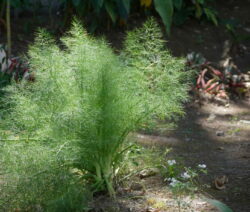
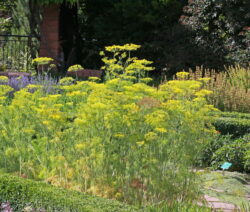
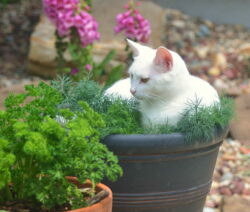
storage
The most aromatic is of course the freshly harvested use of dill. However, if the tender shoot tips are stored at relatively high humidity around freezing point, they can be used for up to three weeks after harvest. As is usual for herbs, the dill can simply be air-dried and is available in the kitchen for a longer period of time without a great deal of loss of flavor. However, if the moisture is not to be withdrawn from the cucumber herb in order to preserve it, the fresh harvest can simply be frozen and, if necessary, removed in portions.
Dill: Uses and Ingredients
Usually only the tips of the dill shoots are used. These are the most intense in aroma. The dill owes this to its essential oils, the mammoth part of which makes up the germ-inhibiting carvone. The tender shoots are popular, for example, with various fish specialties. It also looks good in any spicy salad dressing and meat dishes can also be refined with it. But even pickled cucumbers from the jar would only be half pickled cucumbers without the cucumber herb. You can also add the flower umbels of the dill to the vinegar stock to refine the aroma. The tips are then infused as tea and used as a stomach-calming drink. Dill water, which is obtained from pickled seeds, also has a beneficial effect on digestion. In the past, the oil obtained from the seeds was a popular all-purpose remedy, which Paracelsus already counted on in the late Middle Ages.
So dill deserves a place in the garden. Fish gourmets in particular should not do without the aroma of the fast-growing herbs from their own cultivation.
Find out more in our article Dill: harvest, store and use.
